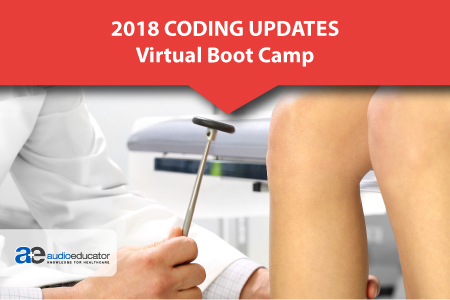It’s still summer, but 2017 is slipping away fast, so there’s not that much time left to get ready for all the changes in coding that will go into effect soon. Orthopedics is seeing some specific coding changes that may surprise you, and the Centers for Medicare & Medicaid Services (CMS) has also proposed some changes to the fee schedule that impact orthopedic practices.
Is your ortho practice ready for the coding challenges ahead? Key people in your office should be getting up to speed now on everything from properly documenting imaging interpretation and order requirements to using the latest OIG Work Plan to ensure your facility’s compliance.
New CPT Codes for Orthopedics
AMA releases the CPT codes for next year in late August or September, but we’ve got some inside scoop. New appearances of physical therapy and grafting CPT codes are rumored to be on the way, and nerve repair codes are changing as well. Experts say knowing how to properly document imaging interpretation and order requirements per CPT and CMS requirements will also be a hot topic in 2018.
The updated NCCI guidelines and subsection guidelines for 2018 from Chapters 1, 4 and 9 should also be on your agenda for 2018, including a review of existing bundling issues.
Don’t forget that subsection guidelines and CPT comments can help coders, billers, office and practice managers, and orthopedic surgeons understand what the changes are and how to properly use the codes.
Game-Changers in the MPFS
CMS released the 2018 Medicare Physician Fee Schedule (MPFS) Proposed Rule on July 13, 2017, along with a request for comments that are due by September 11, 2017. According to CMS, the proposed rule would update payment policies and rates for physician services starting January 1, 2018, and it would change the way payment rates are calculated. It also proposes “potentially misvalued codes,” adds covered telehealth procedures, and lists other new policies.
CMS has also indicated that the evaluation and management (E/M) guidelines have grown long in the tooth: “We are especially seeking comment on how we might focus on initial changes to the guidelines for history and exam, because we believe documentation for these elements may be more significantly outdated,” said the agency in a fact sheet, referring to two of the three components that determine the level of E/M services you can code for: History of present illness (HPI), physical examination and medical decision-making.
For orthopedic practices, changing the E/M guidelines for HPI and the physical exam could mean that what’s needed in a history and who can obtain the HPI elements, and how to support a comprehensive physical exam, could all change. And the HHS OIG and RAC auditors are now looking even more closely at documentation in this area, including whether there is “cloning” going on.
Get Your Ortho Practice Ready to Code for 2018
Find out how the CPT updates for 2018 will play out, as well as how CMS handled comments and responses related to overhauling and changing the E/M guidelines by signing up now for the orthopedic sessions at ProfEdOnDemand’s 2018 Coding Updates Virtual Boot Camp. Although the three-day event is not until December 2017, signing up now ensures access to this annual extravaganza of coding updates for the new year. Don’t miss coding connoisseur Margie Scalley Vaught’s exploration of all things ortho in three full sessions on December 7.




